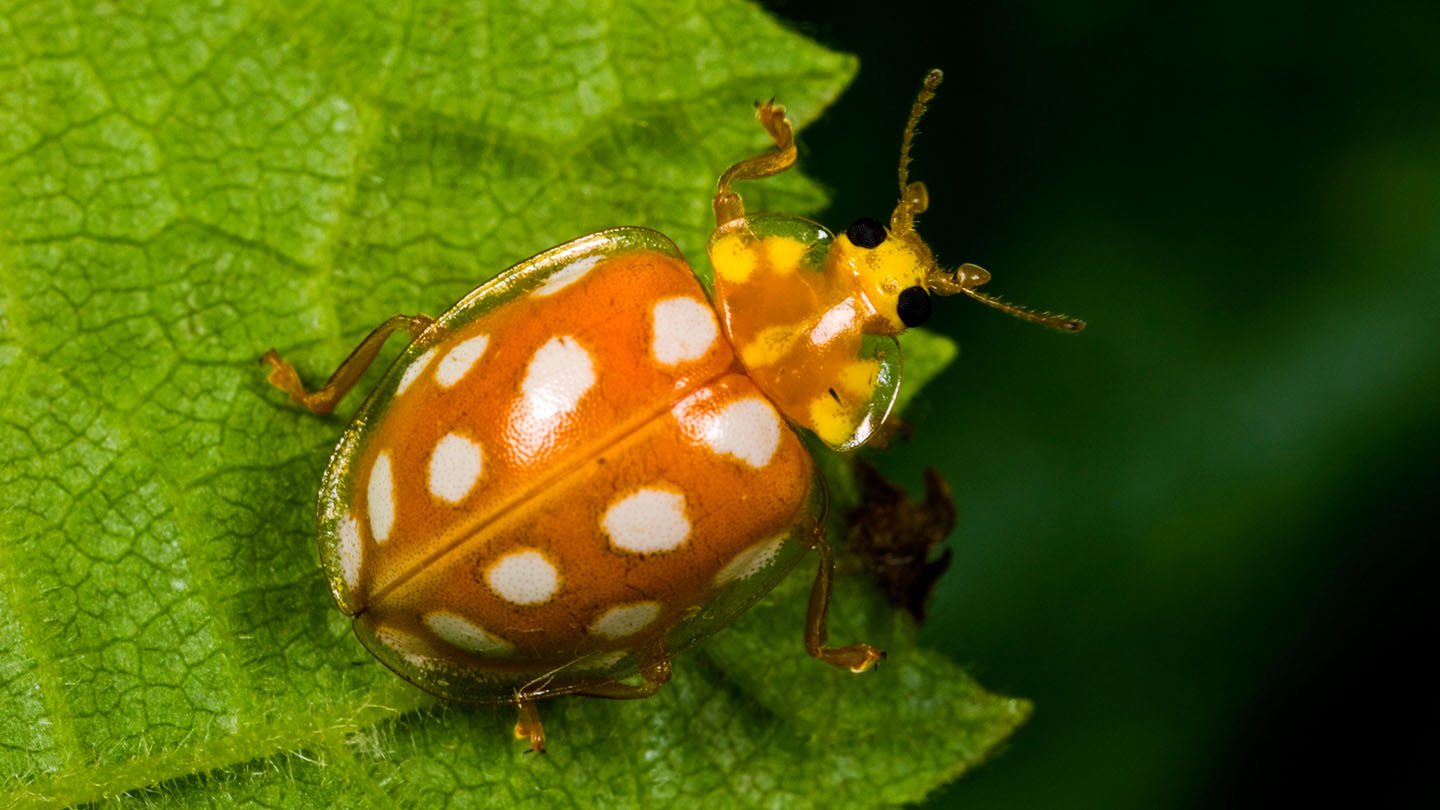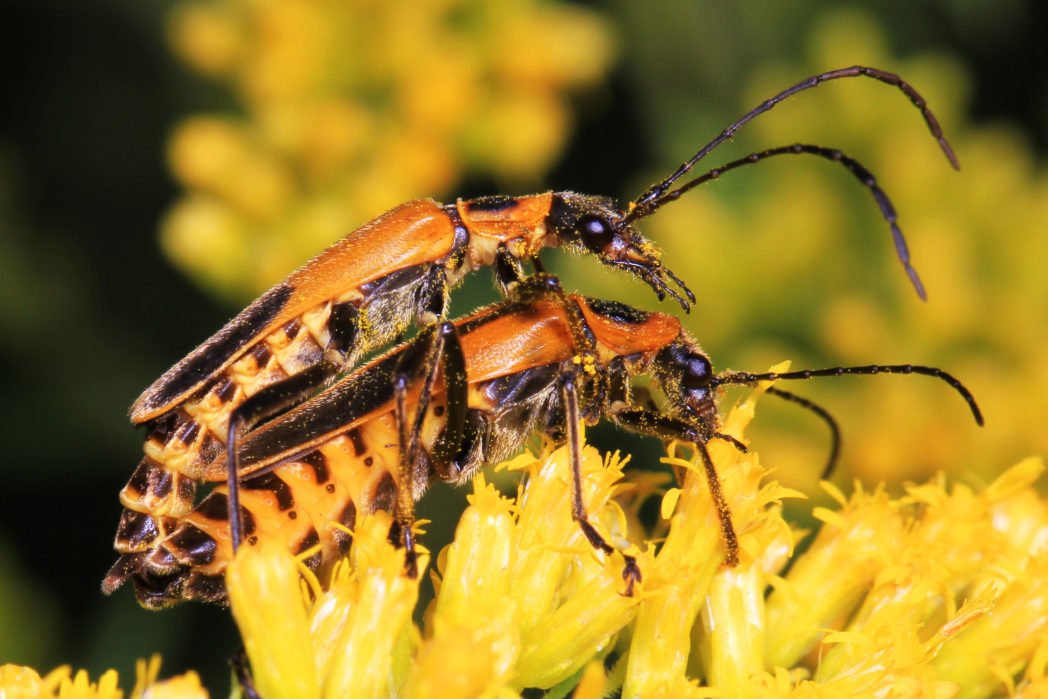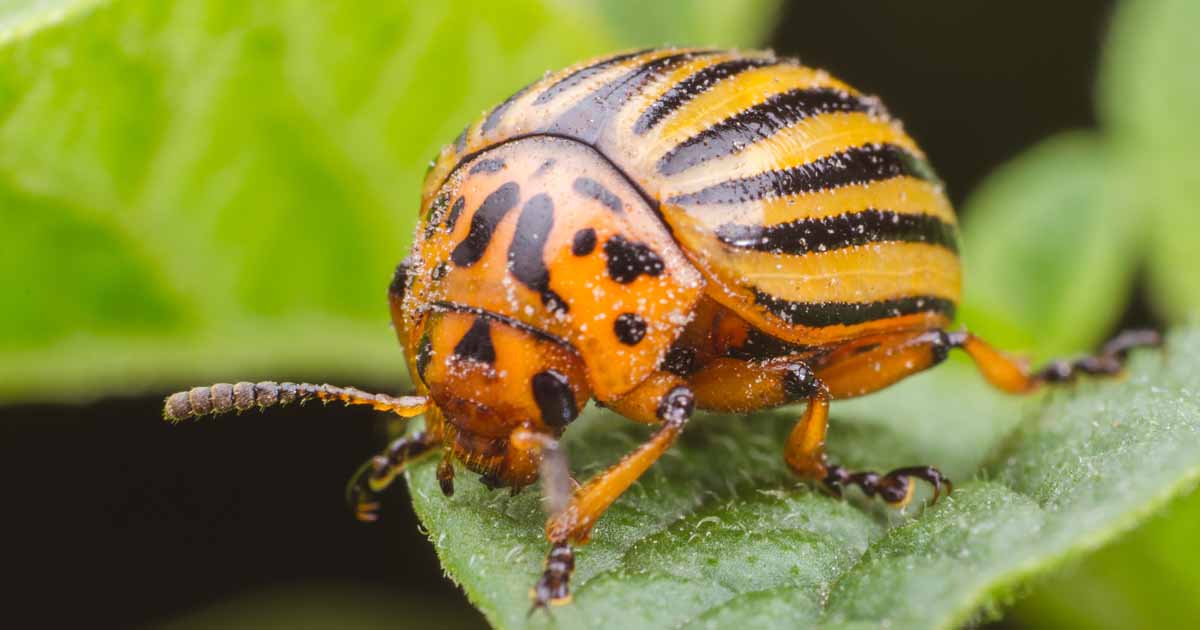Beetles are one of the most diverse groups of insects, with over 400,000 species identified worldwide. They come in a variety of shapes, sizes, and colors, including orange. In this article, we will discover 11 types of orange beetles.
These beetles can be found in different parts of the world and have unique characteristics that make them stand out. From the Maize Weevil to the Ladybirds, we will explore the different types of orange beetles and learn more about their habitats, diets, and distinctive features.
You are reading: Discover 11 Types Of Orange Beetles

Discover 11 Types Of Orange Beetles
Maize Weevil
The Maize Weevil (Sitophilus zeamais) is a species of beetle in the family Curculionidae. It is a small snout beetle that varies in size, averaging about three thirty-second inch in length, and varies from dull red-brown to nearly black.
The maize weevil is a major pest of maize and can be found in numerous tropical areas around the world, including the United States. This species attacks both standing crops and stored cereal products, including wheat, rice, sorghum, oats, barley, rye, buckwheat, peas, and cottonseed.
The maize weevil commonly attacks standing crops, particularly maize before harvest, and is also commonly associated with rice. It infests raw or processed cereals such as wheat, oats, barley, sorghum, rye, and buckwheat.
Although the maize weevil cannot readily breed in finely processed grains, it can easily breed in products such as macaroni and noodles, and milled cereals that have been exposed to excessive moisture.
The larvae bore throughout the seed and pupate there, with the adult emerging after it has matured. Like many other stored grain pests, Sitophilus species tolerate or prefer low moisture levels in their food.
Goldenrod Soldier Beetle

The Goldenrod Soldier Beetle (Chauliognathus pensylvanicus) is a species of soldier beetle in the family Cantharidae. It is also known as the Pennsylvania leatherwing and is one of the most common species of soldier beetle in the Midwest.
These beetles are elongate insects with soft, flexible elytra (wing covers) and are about 5/8 inch long. They are orange in color with two prominent brown-black spots on the elytra.
Goldenrod soldier beetles are often seen on goldenrod flowers, but they will also visit many other flowers, including yellow composites, Queen Anne’s lace, milkweed, rattlesnake master, and other late-summer flowering plants. They can be found in meadows, fields, and gardens and are most abundant in August.
Goldenrod soldier beetles feed primarily on pollen and nectar of flowers but may also eat small insects such as caterpillars, grasshopper eggs, and aphids. They are not harmful to plants and do not bite or sting. Since goldenrod soldier beetles feed on aphids and other insects they find on plants, and since they do not seem to chew on petals, these beetles should be encouraged rather than eliminated.
Tangerine-Colored Ladybugs
Tangerine-colored ladybugs are a type of ladybug that can vary in color from light tan or orange to bright red. They are members of the Asian Lady Beetle family, scientifically known as Harmonia axyridis.
These ladybugs are often referred to as harlequins, Asian lady beetles, or multicolored Asian lady beetles. In many parts of the world, ladybugs, including the orange ones, are considered a symbol of good luck, spiritual, personal, and financial prosperity.
However, the Asian lady beetle, which can be orange in color, is considered a threat in some areas because they can bite and release a yellowish fluid that can cause allergic reactions in some people.
It is important to note that not all ladybugs are harmful, and they are generally considered beneficial insects because they feed on aphids and other pests that can damage plants.
Potato Bugs

Potato bugs, also known as Jerusalem crickets, are a group of insects that can be found in different parts of the world. The name “potato bug” can refer to two different insects: the Colorado potato beetle and the Jerusalem cricket.
The Colorado potato beetle is a major pest of potato crops and has a bright yellow/orange body with five bold brown stripes along the length of each of its elytra.
Read more : Discover 15 Types Of Rattlesnakes In Arizona
On the other hand, the Jerusalem cricket is a large, flightless insect that is native to the western United States and parts of Mexico. It has a large head and is about two inches long as a fully-grown adult, with black and orange stripes.
Despite their name, potato bugs are not true bugs, nor are they native to Jerusalem. Instead, they are nocturnal insects that use their strong mandibles to feed primarily on dead organic matter but can also eat other insects.
It is important to note that while potato bugs are not harmful to humans, they can bite if provoked, and their bite can be painful.
Rove Beetles
Rove beetles are a family of beetles that are primarily distinguished by their short elytra (wing covers) that typically leave more than half of their abdominal segments exposed.
With roughly 63,000 species in thousands of genera, the group is the second largest family in the beetle order, after the true weevils (Curculionidae).
Rove beetles are known from every type of habitat in which beetles occur, and their diets include just about everything except the living tissues of higher plants.
Most rove beetles are predators of insects and other invertebrates, living in forest leaf litter and similar decaying plant matter. They are also commonly found under stones and around freshwater margins.
Rove beetles are typically active, fast-moving insects that may seem wasplike in flight. They are usually strong fliers and can be found in moist habitats in association with soil or decaying organic matter. Rove beetles can be beneficial for human interests, since many species prey on insect pests and can suppress pests of crops, gardens, and forests.
Scarlet Lily Beetles
The Scarlet Lily Beetle, also known as the Red Lily Beetle or Lily Leaf Beetle, is a leaf beetle that feeds on the leaves, stem, buds, and flowers of lilies, fritillaries, and other members of the family Liliaceae. It lays its eggs most often on Lilium and Fritillaria species, and in the absence of these species, there are fewer eggs laid and the survival rate of eggs and larvae is reduced.
The adult beetle is about 6 to 9 mm in length, with relatively long legs and antennae. Its elytra (harder forewings) are bright scarlet and shiny, and its underside, legs, eyes, antennae, and head are black.
The scarlet lily beetle is now a pest in most temperate climates where lilies are cultivated. The beetle is native to Eurasia and was first reported in North America in eastern Canada during World War II, most likely introduced in shipments of plant materials from Europe.
The beetle has been moving westward since then and is now a growing concern in North America. The beetle can cause significant feeding damage on the leaves, stems, and flowers of native and exotic lily species and hybrids.
Drugstore Beetles
Drugstore beetles (Stegobium paniceum) are small, reddish-brown beetles that are commonly found in processed and packaged food products. They are also known as bread beetles or biscuit beetles.
The drugstore beetle has a worldwide distribution, though it is more common in warmer climates. It is similar in appearance to the cigarette beetle, but is slightly larger, with antennae ending in 3-segmented clubs.
As its name suggests, the drugstore beetle has a tendency to feed on pharmacological products, as well as a diverse range of dried foods and spices, hair, leather, books, and museum specimens.
The larvae of drugstore beetles are C-shaped grubs that can be found feeding inside infested products. The life cycle of the drugstore beetle takes three to four months at room temperatures. The best control for drugstore beetles is to clean up and dispose of infested products.
Stag Beetles
Stag beetles are a family of about 1,200 species of beetles in the family Lucanidae, currently classified in four subfamilies. They are one of the most spectacular insects in the UK, with the male’s large jaws looking just like the antlers of a stag.
Stag beetles are found in every type of habitat in which beetles occur, and their diets include just about everything except the living tissues of higher plants. Most stag beetles are predators of insects and other invertebrates, living in forest leaf litter and similar decaying plant matter.
The larvae of stag beetles are C-shaped grubs that live in rotting wood. The heads are often brownish or black, and they have three pairs of legs. Male stag beetles usually have enlarged, sometimes astonishing jaws, which they use to fight over females.
The best mating sites are where females go to eat, or near the rotting wood where females lay eggs. Despite their often fearsome appearance, stag beetles are not normally aggressive to humans.
Read more : 12 Types Of Blue Fish
Stag beetles are a priority species for conservation in the UK, due to their range contracting over time and continuing loss of habitat.
Soldier Beetles
Soldier beetles are a family of beetles that are relatively soft-bodied and straight-sided. They are cosmopolitan in distribution and are commonly found in gardens during the summer.
Soldier beetles are beneficial insects that mainly feed on pollen and nectar, making them important pollinators. They are attracted to yellow flowers and are harmless to plants.
Soldier beetles are related to fireflies but do not have the light-producing organs that fireflies have. The larvae of soldier beetles are often active, velvety, and brightly colored, and they feed on the ground, hunting snails and other small creatures.
Soldier beetles are predators of other small insects and can be important predators of caterpillars, aphids, and other soft-bodied insects. The best control for soldier beetles is to ignore them, as they will go away on their own.
Blister Beetles
Blister beetles are a family of beetles known as Meloidae, with about 7,500 species known worldwide. They are so-called because of their defensive secretion of a blistering agent called cantharidin. Many species of blister beetles are conspicuous and some are aposematically colored, announcing their toxicity to would-be predators.
Blister beetles are hypermetamorphic, going through several larval stages, the first of which is typically a mobile triungulin. The larvae are insectivorous, mainly attacking bees, though a few feed on grasshopper eggs.
While sometimes considered parasitoids, in general, the meloid larva apparently consumes the immature host along with its provisions, and can often survive on the provisions alone. Blister beetles can be found in many different colors and several sizes and body shapes. They are gray to brown with yellow stripes running lengthwise of the wing covers.
The ash-gray blister beetle is about 1/2 inch long and is completely gray, while the black blister is about 1/2 inch long and is solid black. The margined blister varies from 5/8 to 1/2 inch long and is black with a gray to cream band around the edge of each wing cover.
Blister beetles can be beneficial, since the larvae of the common blister beetles destroy grasshopper egg pods. However, the adults of some species can be harmful to crops, such as alfalfa, and can cause blisters on human skin if crushed.
Ladybirds
Ladybirds, also known as ladybugs, are a family of beetles that are well-known and loved by many people around the world. There are about 5,000 different species of ladybirds in the world, and they come in many different colors and patterns.
The most familiar species in the UK is the seven-spot ladybird, which has a shiny, red-and-black body. Ladybirds are beneficial insects that feed on aphids and other plant-eating pests, making them important for farmers and gardeners.
Most ladybirds have oval, dome-shaped bodies with six short legs, and depending on the species, they can have spots, stripes, or no markings at all. Ladybirds are easy to recognize and are often considered pretty, graceful, and harmless to humans.
Ladybirds are also known for their bright colors, which act as an important defense mechanism, warning animals they’d best not eat them. Ladybirds are a name that has been used in England for more than 600 years for the European beetle Coccinella septempunctata.
Ladybirds spend the winter months in a dormant state and begin to stir in spring as the weather gets warmer and the days longer. They feed on a variety of high-energy foods, including pollen and nectar, and begin to seek out their favorite foods, such as aphids or scale insects. Ladybirds often huddle together over winter, sometimes in very high numbers and sometimes in small groups.
FAQS
1. What are some types of orange beetles?
Some types of orange beetles include Maize Weevils, Goldenrod Soldier Beetles, Tangerine-Colored Ladybugs, Potato Bugs, Rove Beetles, Scarlet Lily Beetles, Drugstore Beetles, Stag Beetles, Soldier Beetles, and Blister Beetles.
2. Are all types of orange beetles harmful?
No, not all types of orange beetles are harmful. Some, like Goldenrod Soldier Beetles and Ladybugs, are beneficial insects that feed on pests and are important for pollination.
3. Can blister beetles be harmful to humans?
Yes, the adults of some species of blister beetles can cause blisters on human skin if crushed.
4. Why are ladybirds considered beneficial insects?
Ladybirds are considered beneficial insects because they feed on aphids and other plant-eating pests, making them important for farmers and gardeners.
5. What is the best control for drugstore beetles?
The best control for drugstore beetles is to clean up and dispose of infested products.
6. Why are stag beetles a priority species for conservation in the UK?
Stag beetles are a priority species for conservation in the UK due to their range contracting over time and continuing loss of habitat.
Source: https://petstutorial.com
Category: Animals










